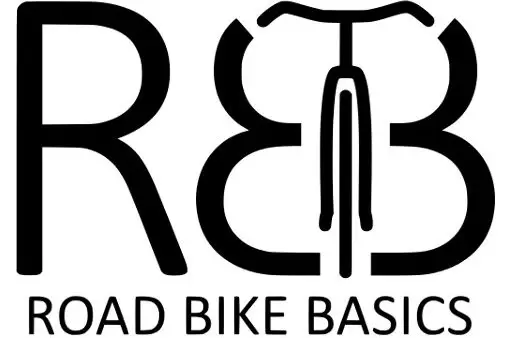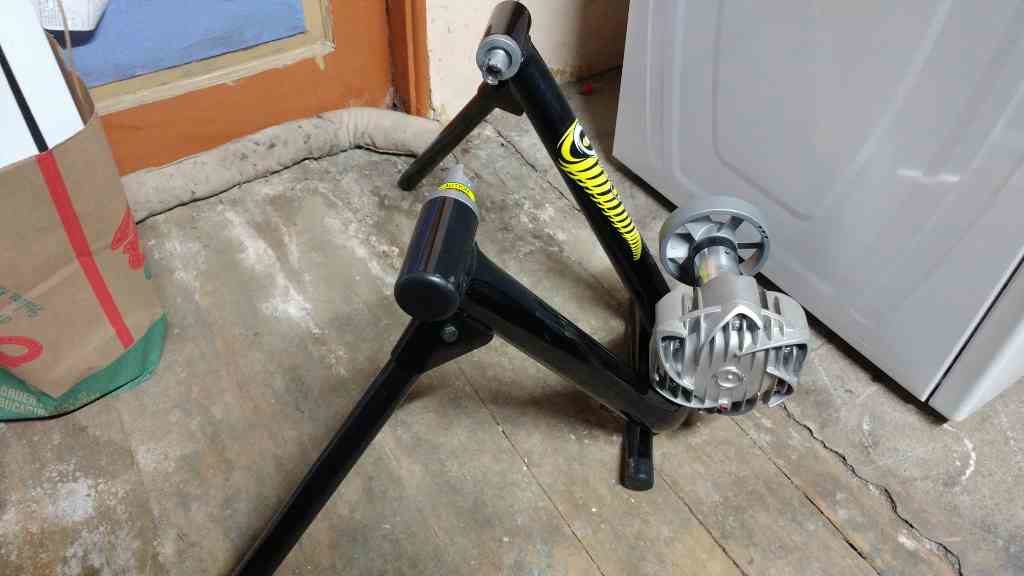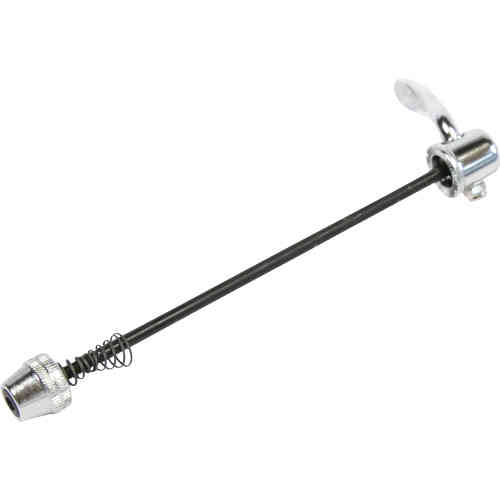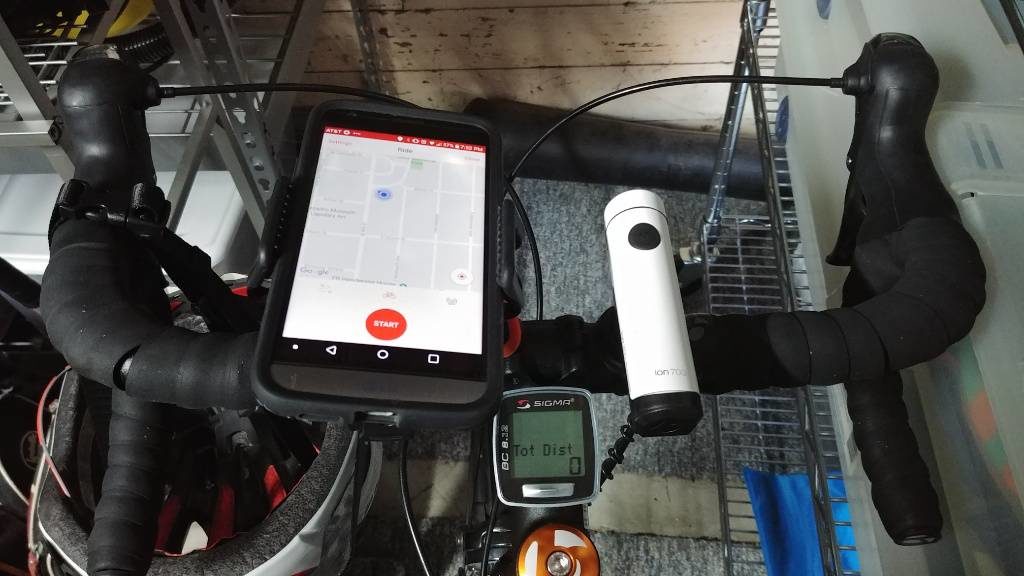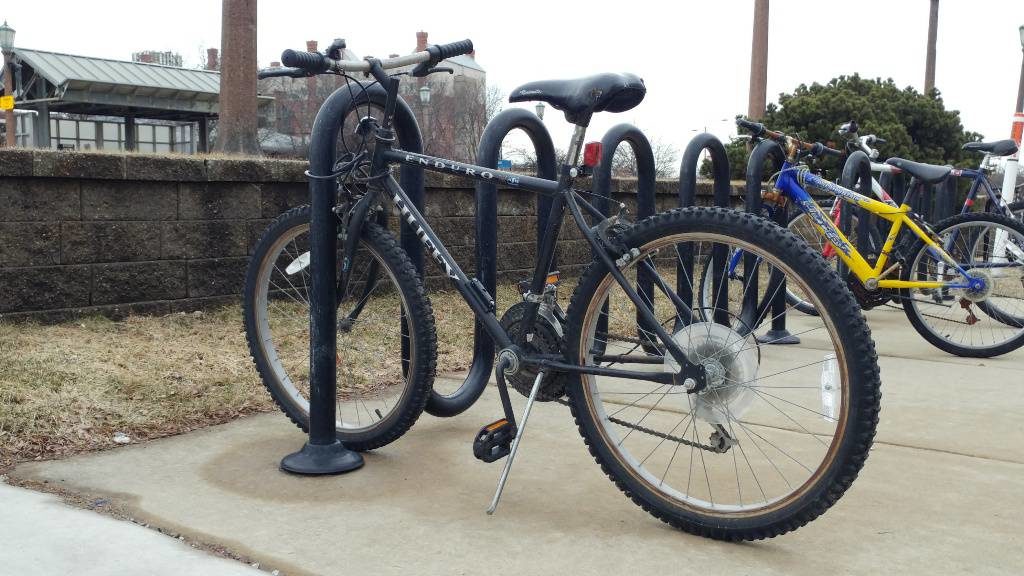I inherited an old CycleOps trainer from my dad when I was in college. It rides pretty well, so I broke it out recently and enjoyed a short ride. Afterwards, I noticed that I had scratched my quick release in the process. Thankfully, it wasn’t too bad, but it got me wondering. How much can a trainer actually hurt your bike? Here’s what I’ve learned so far.
When you set it up properly, a bike trainer will not hurt your bike. Most of them will wear out the tread on your tires, though. I’ll go over some considerations to take while setting up your bike and while you are training. That way you can make sure that you reduce the risk of breaking something. Let’s start with what they are and how they work.
What is a trainer
A trainer is a machine that is designed to keep your bike in place while you are riding it. Some offer more resistance as you pedal while others give you a bit more freedom. Over the years, a few styles have become more popular than others.
This link will take you to Amazon to see the bike trainer that I use. Thankfully, trainers don’t have to be expensive. Here is a link to an affordable trainer that has good reviews on Amazon.
It is important to understand how they work and interact with your bike. That will frame how we approach each potential source of damage.
How trainers hold your bike
Trainers usually employ one of two main methods for keeping your bike from moving or falling over. Most trainers hold onto your rear fork and lift your rear wheel off the ground and push it onto a roller.
The other style
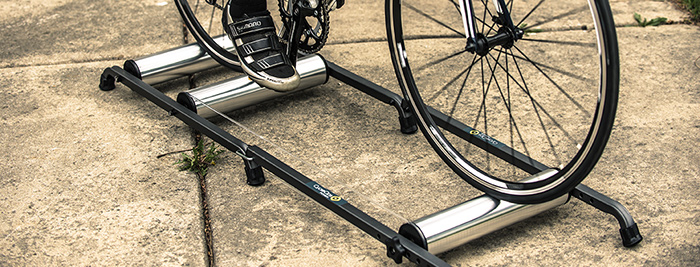
What trainers do with your rear wheel
Most trainers either pick up your rear wheel and press a roller against it or have you ride directly on the roller. However, some trainers have gears built into them and will completely replace your rear wheel. It still attaches to your rear fork, but you wrap your chain around the trainer’s gears.
Your tires are the first thing guaranteed to go when you ride a trainer very often. Rollers wear out your tires quite a bit faster than riding outside on a road. They deform the tire more and will burn through any tread that it has. With no tread, your tires can’t grab onto the road while you are riding. So, if your trainer uses rollers, you can:
- Use a spare tire on your trainer – Some riders have wheels and tires just lying around. So, devoting one to be your training tire isn’t a bad idea.
- Buy a special training tire – These tires are made of a slightly different kind of rubber, don’t have any tread, and are brightly colored so you don’t mix them up with normal tires
- Just keep using last season’s tire – Riding on a trainer is usually a winter event. So, you can wear out one tire during your riding season, and use that on your trainer in the off-season. Once the next season rolls around, just replace it with a new tire and repeat the cycle.
Look after your skewers
This only applies to trainers that grab onto your rear wheel to hold your whole bike upright. The piece they hold is called the skewer.
Some adapters on the trainer don’t perfectly fit your skewer and will have a tendency to scratch them. That is mostly an aesthetic problem, but it can lead to you needing to replace the skewer early. The steel adapter on my CycleOps is much harder than my aluminum quick release skewer. So, it did a number on it.
Thankfully, I was able to purchase this one off of amazon. It’s easy to swap with my current skewer and it fits much better with my trainer.
Since the trainer is keeping your bike upright and a rider’s tendency is to lean the bike side to side, it is technically possible to bend a skewer. Here are some things to do to protect your skewer:
- Use the skewer that comes with the trainer – Many trainers will actually provide you with a skewer that is designed to fit it well. However, especially on second-hand trainers, that isn’t always an option.
- Use a steel skewer – Steel skewers are much harder and stronger than aluminum skewers. So, using a steel skewer will make it much more difficult to bend, and will reduce scratches.
- Change up your technique – The less you rock side to side, the less likely you are to cause damage. The easiest way to do that is to just not sprint hard or ride out of the saddle.
Your front wheel isn’t safe either
The one component of a bike I thought would be safe from damage was the front wheel. If you aren’t using rollers, the front wheel isn’t rolling and you should have something holding it up. So, the tire shouldn’t be getting worn out.
The real trick is that you are still straining the spokes in the wheel. Especially if you like to leave your bike on your trainer between training sessions. Thankfully, the solution to this is easy:
- Rotate your front wheel by a quarter turn – This doesn’t apply if you take your bike off the trainer. If you leave it on the trainer, though, rotating your wheel will spread out the load.
Your sweat is (kind of) dangerous
As long as you are on your bike while you are training, sweat is going to get on your bike. The only problem with that sweat is corrosive and can damage your frame, components, and paint.
When you ride outside, the wind blows off and evaporates your sweat before it has the opportunity to cause any damage. While on a trainer, unless you have a massive fan, your sweat will just drip onto your frame and collect on your handlebars and seat. Here are some tips to protect your bike:
- You can put a towel on your top tube, seat or seat post, or handlebars – Towels will absorb your sweat before it gets the opportunity to dry out and hurt your bike. Three or four towels might be a bit excessive, though.
- Use a bike sweat net – A sweat net is just a piece fabric that catches your sweat where it would otherwise fall on your bike. They are pretty cheap and people seem to like them. Here is a link to check them out on Amazon.
- Clean your bike after your workout – The biggest savior to your bike will be to clean it after your ride. At the very least, wet a towel and wipe down your bike. Don’t forget your seat, seat post, gears, and handlebars too!
Don’t worry too much about your frame
Your bike’s frame isn’t used to being rocked around while it’s held by the rear fork. However, your frame is also fairly strong and designed so that it will flex a little bit. So, If you ride out of the saddle or sprint as hard as you can, you are more likely to fall over than you are to break your bike.
All things considered, riding on a trainer does fatigue your bike faster, though. If you took two bikes, road them the exact same amount, cleaned both regularly, but road one only outdoors and the other only on a trainer, the one on the trainer would break first. That isn’t to say that its life would be incredibly short, just shorter than it could have been.
If you are worried about damaging your frame, though:
- Use a less aggressive riding style – A less aggressive riding style includes not standing while riding, not rocking the bike back and forth, and avoiding sprints. Keep an eye on your rear fork as that is the most likely spot for damage in this case.
I hope that you’ve now got the information that you need to confidently use a trainer without needing to worry about it hurting your bike.
Thanks for being here!
I make content that empowers people to enjoy riding their bikes.
Are you interested in learning more about that?
Here are some hand
